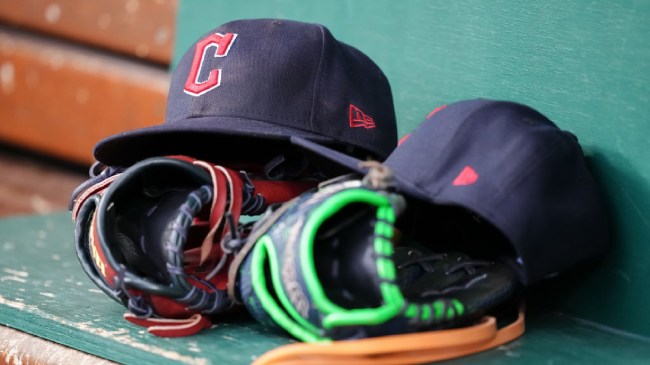
Getty Image
There’s an old adage that attempts to sum up the appeal of baseball that goes something along the lines of “Every night you’ll see something you’ve never seen before”—which certainly happened when Ray Caldwell took to the mound on August 24, 1919.
The MLB has existed for close to 150 years, and despite its lengthy history, it seems like there’s always a chance you’ll get to witness something that’s never unfolded on the diamond or be lucky enough to watch a one-in-a-million scenario unfold at some point during a contest.
It feels like baseball has an uncanny ability to spawn some seemingly impossible occurrences, including what is probably one of the craziest things I’ve ever seen with my own eyes: the time Randy Johnson threw a pitch that somehow managed to collide with the bird that was unfortunate enough to swoop down onto the field and directly into the path of a 100 MPH fastball.
That’s really just the tip of the iceberg when it comes to the unexpected events we’ve been treated to at MLB games, whether it’s other incidents involving wild animals or a guy chugging a beer after a foul ball landed perfectly in the cup he was holding. The list goes on and on, but the story of Ray Caldwell might top them all.
It’s tempting to use “one-in-a-million” to describe what happened to Caldwell, but he was technically at the center of a one-in-15,300 incident—a number that represents the theoretical odds you’ll be struck by lightning at some point during your life.
MLB pitcher Ray Caldwell didn’t let getting hit by lightning stop him from finishing a game

Getty Image
On August 24, 1919, Ray Caldwell put on a Cleveland uniform for the first time and was set to take the mound in front of 20,000 fans at League Park for the first time since he was waived by the Red Sox.
Caldwell had made his debut with the New York Yankees (then called the Highlanders) in 1910 but eventually saw his career derailed by a drinking problem that led to the team shipping him off to Boston in 1919.
However, the franchise that was then known as the Indians decided to give him another shot after he found himself without a home with the help of a unique contract that gave Caldwell the green light to drink as much as he wanted on his days off as long as he was able to meet the other demands that were set for him (they apparently handled addiction differently more than a century ago).
The pitcher didn’t have much trouble with the Philadelphia Athletics after trotting out to the mound in Cleveland, as he’d basically been lights out over the course of the first eight innings and headed back onto the field with a 2-1 lead and the chance to end things in the top of the ninth.
However, the Weather Gods had other plans, as dark clouds started rolling in over Lake Erie at that point. Caldwell did what he could to close the game out before the rain started, but after recording the first two outs, a bolt of lightning suddenly struck the area where he was standing.
Cleveland shortstop Ray Chapman later recalled feeling a surge of electricity run down his leg, while catcher Steve O’Neill said he immediately took off his mask and threw it to get as far away from metal as he could once he realized what was going on.
After a few chaotic seconds, the players gathered themselves and assessed the damage before realizing Caldwell was lying motionless on the mound with his arms spread.
Fear that electricity could still be coursing through Caldwell’s body meant everyone refrained from touching the pitcher to avoid potential electrocution, so they were essentially powerless when it came to offering any aid. While most people in the ballpark initially feared the worse, the victim proved he was still very much alive after groaning a bit and getting back to his feet.
While his teammates were obviously thrilled he was not, in fact, dead (as many of them had presumed), they were also understandably concerned about his well-being and encouraged him to make his way into the clubhouse for medical attention.
However, Caldwell was having absolutely none of that, as he still had one more out to record—which is exactly what he did when he retired the next batter to cap off the complete game and get credited with the win.
In a world where players might take the night off because of a blister (I know it can be very painful and hard to perform, but a blister just sounds soft), this is a weird breath of fresh air.
I’m not saying I wish we could return to the days when an MLB player could get struck by lightning and basically brush it off like nothing happened, but it’s an objectively awesome move.
Caldwell went on to finish the season by posting a 5-1 record and 1.71 ERA with Cleveland with the help of the no-hitter he tossed against the Yankees less than three weeks after that fateful incident. What a ride.